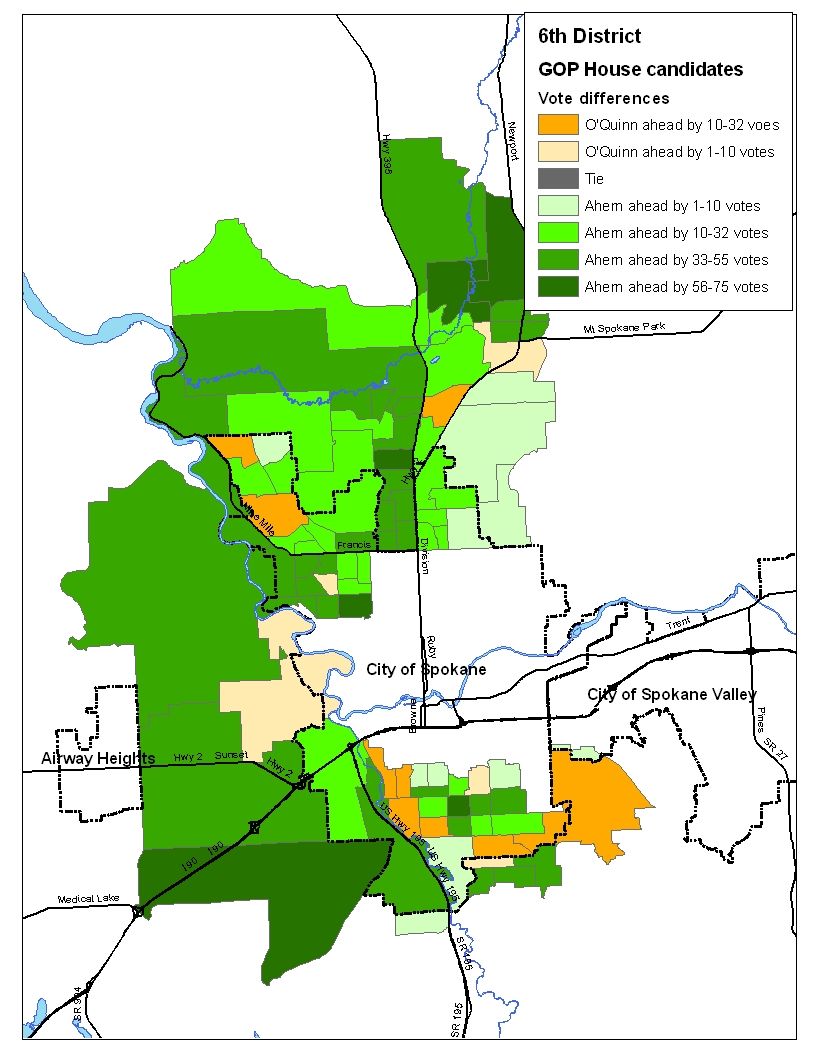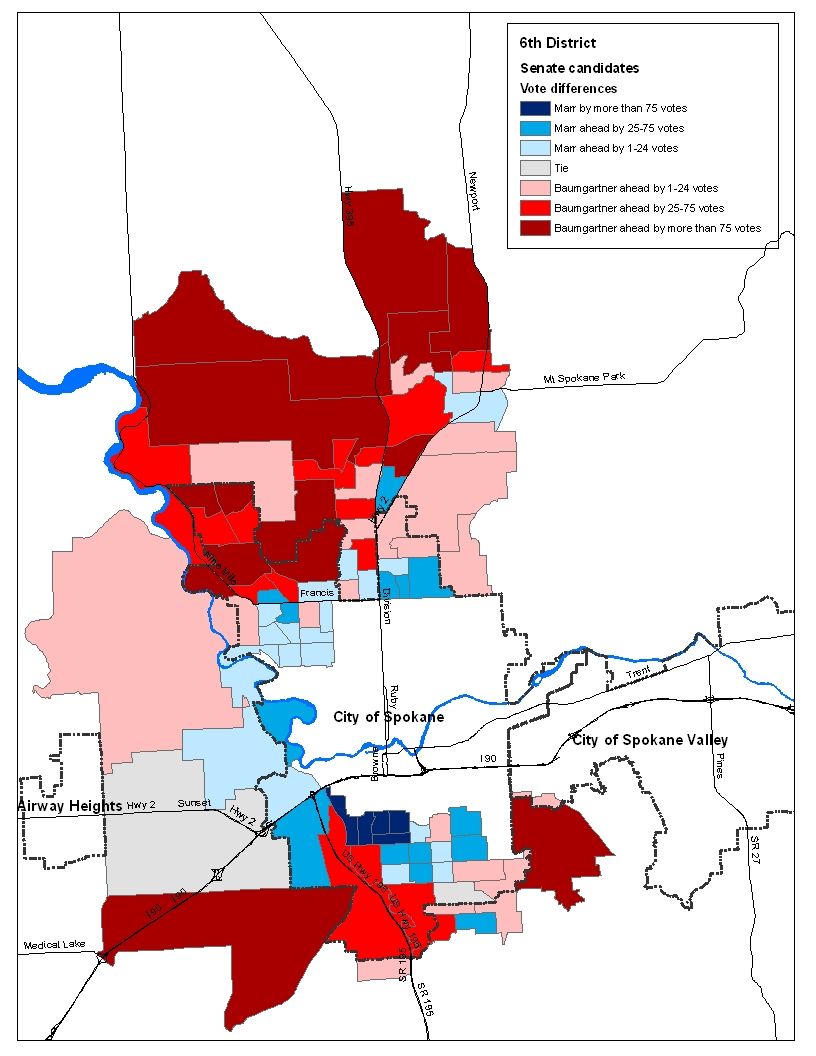Shenanigans in the 6th? Numbers suggest no
Shelly O’Quinn’s legislative race, like nearly every political race worth a darn, may be leaving some supporters with hard feelings, nagging questions and what ifs.
Wednesday’s ballot count showed O’Quinn has no real hope of moving out of third place, which is no doubt vexing to supporters who believed she was a candidate with great potential to be a rising GOP star. While they try to figure out why she lost, some apparently have come up with a theory that it was Democratic perfidity that helped do her in.
The theory, recounted by one supporter, is that Democrats were afraid that freshman incumbent John Driscoll would have a much harder time in the general against O’Quinn than John Ahern. There’s some logic to that speculation:
Driscoll beat Ahern, a well-entrenched encumbent, two years ago, so history is on their side.
Ahern outpolled O’Quinn, but she outspent him.
The Gallatin Group, a regional public affairs organization that has people who follow politics the way others follow Gonzaga basketball, opined as such in an election eve epistle titled “Pondering Politics in the Inland Northwest”: Here’s our prediction. In an Ahern vs. Driscoll match-up, Driscoll wins. However, the Gallatin office is split in our prediction that if O’Quinn manages a win tomorrow the seat will return back to its Republican roots with an O’Quinn victory in November against Driscoll.
So wily Democrats could try to sway the outcome of the primary by voting for Ahern now, then switching to Driscoll in November. Or so the speculation goes.
Speculation is one thing. Facts are something else.
One, it assumes Democrats are organized enough to hatch the plan, and execute it by having willing Driscoll voters cast ballots for Ahern. Democrats have shown themselves to be anything but organized this year. Were they that organized, they’d have fielded candidates in the 4th, and recruited a congressional hopeful who could win at least one county in the 5th District.
B, it ignores the fact that Washington voters love to split tickets on their own.
Lastly, if there was some kind of plot that could overcome the ticket-splitting tendencies of the electorate, it would show up in the vote totals when comparing the votes for the House race with those in the 6th District Senate race. Democrat Sen. Chris Marr pulled down about 2,000 more votes than fellow Democrat Driscoll, while Ahern and Quinn combined for about 4,000 more votes than Republican Senate hopeful Mike Baumgartner. Considering that Marr and Driscoll have similar voting histories that would attract the same partisan support, if something fishy is going on, a pattern would likely emerge. Ahern would consistently do much better in precincts that Marr won handily as Democrats crossed over to vote for him to help Driscoll down the road; O’Quinn would consistenty run stronger in precincts where Baumgartner ran far ahead of Marr.
As the maps below show, that ain’t what happened. At least not consistently.

Setting aside the fact that there were much bigger swings in the Marr-Baumgartner race, which is common in a two-person contest, what happened was this: Ahern did very well in some of the precincts where Baumgartner did very well, but O’Quinn also ran strong in some strong Baumgartner precincts. And both had successes and failures in precincts that Marr won handily.
What the maps show more conclusively is that Ahern won because he won more of those same Republican-leaning precincts that Baumgartner won, and by bigger margins. It’s a pretty simple equation. Win more votes in more places, and you win the election.
* This story was originally published as a post from the blog "Spin Control." Read all stories from this blog
